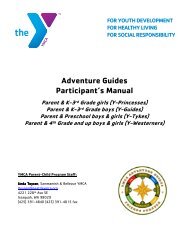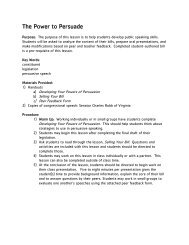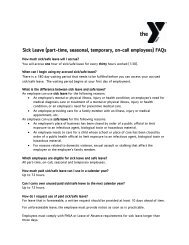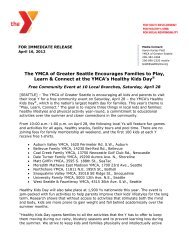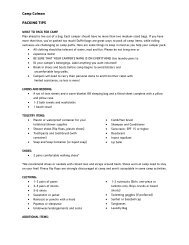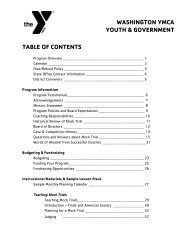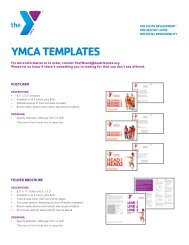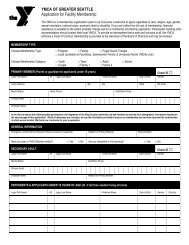washington mock trial rules of evidence - YMCA of Greater Seattle
washington mock trial rules of evidence - YMCA of Greater Seattle
washington mock trial rules of evidence - YMCA of Greater Seattle
You also want an ePaper? Increase the reach of your titles
YUMPU automatically turns print PDFs into web optimized ePapers that Google loves.
person was intoxicated when he was involved in an accident on a particular date. This <strong>rules</strong>hould not be confused with the <strong>rules</strong> pertaining to impeachment.The 404(a)(1) exception permits an accused in a criminal case to <strong>of</strong>fer <strong>evidence</strong> in hisdefense pertaining to his character if the character trait is relevant to his defense. Forexample, an accused may <strong>of</strong>fer testimony concerning his good record for honesty at workwhere he handles large sums <strong>of</strong> money in a case where he is accused <strong>of</strong> theft. On theother hand, his record for honesty would not be relevant in a case where he was chargedwith assault or indecent exposure.If the defendant opens up the subject <strong>of</strong> his character, the prosecution will be permitted tocross-examine him on the subject and introduce independent <strong>evidence</strong> which rebuts thedefendant's testimony concerning his good character. For example, if a businessmandefendant testifies about his wealth in an effort to persuade the jury that he has no needto steal money from his clients, the prosecution will be permitted to inquire about thedefendant's income tax returns. However, just because a criminal defendant chooses totestify does not open up the issue <strong>of</strong> his or her character. The subject is opened up onlywhen the accused voluntarily puts his or her character at issue by claiming to be a person<strong>of</strong> exemplary behavior.The 404(a)(2) exception permits the accused to <strong>of</strong>fer <strong>evidence</strong> <strong>of</strong> the victim’s violentcharacter in murder and assault cases in order to show that the victim was the firstaggressor and the accused acted in self defense.Rule 404(b) is based on the concept that the defendant is being tried for crimes alleged tohave been committed in the present, not crimes or wrongdoing committed in the past. It isintended to prevent the prosecution from arguing that since the defendant has committed<strong>of</strong>fenses in the past, he or she is more likely to have committed the <strong>of</strong>fense with which heor she is currently charged, i.e., that the defendant is obviously a criminal or a “badperson.” The danger <strong>of</strong> unfair prejudice from the admission <strong>of</strong> such <strong>evidence</strong> far outweighsits relevance.However, this <strong>evidence</strong> may be admissible for some other purpose. For example, <strong>evidence</strong>that the defendant and the deceased engaged in physical combat on several occasions inthe past could prove that the defendant was hostile toward the deceased and, therefore,had a motive to commit murder.Evidence which is admissible under this rule will <strong>of</strong>ten be ruled inadmissible under Rule 403because the danger <strong>of</strong> unfair prejudice far outweighs its probative value. When thedecision to admit or exclude <strong>evidence</strong> concerning prior wrongdoing is in doubt, judgesusually rule in favor <strong>of</strong> excluding the <strong>evidence</strong>.



